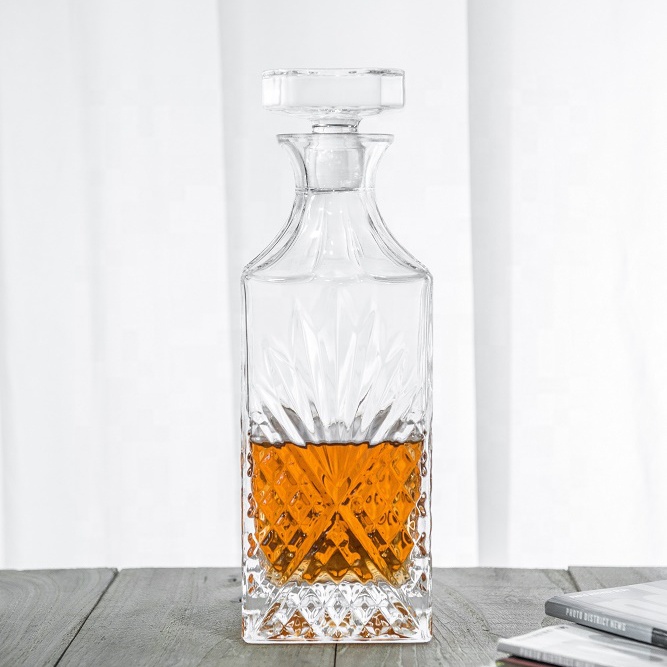A Knowledge to Frequent Pastis
While you dive into pastis, the anise-flavored liqueur and French aperitif favourite, there are two producers that undoubtedly pop up: Ricard and Pernod. Each producers are so well-known and so iconic, they’ve flip into synonymous with the class itself. Whereas their recipes share similarities, and each producers in the meanwhile are each owned by the same world spirits conglomerate, there are key variations that set these customary pastis aside.
Correct proper right here’s all the points you could know relating to the similarities and variations between Pernod and Ricard.
Pernod vs. Ricard Quick Data
• Each spirits are French-produced anise-flavored liqueurs.
• They each louche, or flip cloudy, when water is added.
• Ricard is often thought-about further herbaceous than Pernod.
• Although they share many substances, licorice root is the dominant botanical in Ricard, whereas star anise and fennel are the dominant botanicals in Pernod.
• Ricard is often served with chilly water and ice, whereas Pernod often selections in cocktails.
• Ricard has an ABV of 45%, whereas Pernod has an ABV of 40%.
What’s Pastis?
Pastis is an pure liqueur historically produced in Southern France and flavored with anise, fennel seeds, and licorice root. The class usually ranges in alcohol content material materials supplies from 40–45% ABV and, by licensed definition, must comprise a minimal ABV of 40% and fewer than 100 grams of sugar per liter.
The phrase “pastis” comes from the Provencal Occitan dialect—nonetheless spoken in elements of the southern provinces of France—and interprets to “combination.”
Pastis was born out of the 1915 absinthe ban in France and all via quite a few Europe. Anise-flavored spirits have been massively customary in Southern Europe on the time, and with out their go-to aperitif, many contained in the southeastern house of France turned to the do-it-yourself anise spirits that had grown in fame on condition that late nineteenth century.
With an in depth approximation of the flavour profile of absinthe and the an identical dilution ritual, pastis was capable of bypass the absinthe ban on account of some elements. The anise-flavored liqueur was made with out wormwood, the required issue ingredient that was erroneously used to vilify absinthe, and pastis was bottled at a a lot decrease proof. It was furthermore put apart by the addition of sugar, which effectively made pastis a liqueur, in distinction to absinthe which historically is distilled as a liquor with none added sugar.
In 1932, 17 years after the absinthe ban, Ricard was the primary enterprise pastis model to launch, adopted by Pernod in 1938.
Quick-term Historic earlier of Ricard
Thought-about the distinctive pastis, Ricard was created by Paul Ricard in his hometown of Marseille, positioned contained in the Provence house of southern France. As a youthful man he joined his household’s wine enterprise and shortly after was launched to a regional anise-flavored aperitif: pastis. Utilizing a house nonetheless, he labored to refine the do-it-yourself recipe and included star anise, fennel seeds, licorice, and fully completely different fragrant crops from Provence.
In 1932, at 22 years outdated, Paul Ricard started promoting his “Pastis de Marseille,” the primary enterprise pastis model, shortly dominating the market and overtaking fully completely different established producers like Pernod Fils, which had been crippled by the absinthe ban.
Quick-term Historic earlier of Pernod
Although Ricard is considered the primary pastis to commercialize on a giant scale, the Pernod model has a for for for much longer legacy.
In its distinctive incarnation as Pernod Fils, the model, led by Henri Louis Pernod, constructed the primary absinthe distillery in 1797. All through the years that adopted, it was the darling of Parisian café society and commanded the world’s absinthe market share. When the corporate moved its distilling operations from Switzerland to Pontarlier, France eight years later, it created what would flip proper right into a hub of absinthe distilleries. Shortly, the small commune in Jap France grew to become the epicenter of absinthe manufacturing.
In 1915 the absinthe ban went into affect all via quite a few Europe, forcing the Pernod Fils operations to stop in France. Nonetheless it didn’t disappear fully. Transferring manufacturing to a smaller distillery in northeastern Spain—the place absinthe was nonetheless licensed—the corporate was capable of resume operations.
The Pernod liqueur we’re accustomed to in the meanwhile was launched in 1938 beneath the newly long-established Pernod model, a partnership between Pernod Fils and Hémard Distilleries. Nonetheless, Pernod furthermore launched a reformulated absinthe based completely on the distinctive recipe in 2005.
In 1975, the competing firms, and the world’s largest producers of anise-flavored aperitifs, joined forces to create Pernod Ricard. Their portfolio now consists of over 240 producers.
Pernod Data
-
Additional pronounced notes of star anise and fennel, with mint/menthol undertones
-
40% alcohol by quantity (ABV)
-
Brighter and brisker
-
Components macerated in impartial spirits all by way of manufacturing
-
Featured further intently in cocktails
Ricard Data
-
Additional herbaceous and licorice-forward
-
45% alcohol by quantity (ABV)
-
Drier and richer
-
Components steeped beneath stress in impartial spirits all by way of manufacturing
-
Usually served neat or with ice
Similarities
They’re each French-produced anise-flavored liqueurs.
Ricard and Pernod each use unaged impartial spirits as their base. And, whereas each French producers keep recipes which might be fastidiously guarded secrets and techniques and strategies and strategies, unchanged since their inception, they share numerous the same substances. Among the many many aromatics used to make up the flavour profile of each producers embody star anise, fennel seed, anise seed, and licorice root.
They each comprise so much a lot much less sugar than many liqueurs and have an ABV between 40–45%.
By way of licensed regulation, all pastis must comprise fewer than 100 grams of sugar per liter, lower than most liqueurs. Each Ricard and Pernod are nonetheless perceived as pretty candy, on account of sweet-tasting compounds that come from the herbaceous substances used to model each liqueurs.
Though Ricard and Pernod boast barely completely fully completely different ranges of alcohol by quantity, European regulation requires that every one pastis is bottled inside a wide range of 40–45% ABV.
They each “louche” when water is added.
The standard preparation of pastis incorporates along with water to dilute the liqueur, a lot as with absinthe. Due to the bottom of anise in each producers, when water is added, the drinks flip into cloudy. This transformative course of is called the louche.
As shortly as water is launched to the liquid, the terpene oils produced by the botanical extracts like star anise and fennel, which are not water soluble, fall out of suspension with the alcohol. The result’s a transparent spirit that encompasses a specific milky opaqueness when water is added.
The Variations
Manufacturing Course of and Alcohol Ranges
To assist create Ricard’s attribute herbaceous model profile, an fragrant compound (usually known as anethole essence) is created by rectifying botanicals paying homage to inexperienced anise, star anise, and fennel seeds.
Ricard’s fully completely different major flavoring agent is licorice root, which furthermore contributes to its distinctive yellow shade. The licorice root together with seven completely fully completely different Provençal herbs are steeped beneath stress with impartial alcohol. This course of is repeated 3 events till the alcohol is totally steeped. All of the substances are then blended with sugar, and caramel is added to accentuate the colour. The ultimate phrase mixture is triple-filtered after which bottled at 45% ABV.
Pernod’s mixture of fragrant plant extracts differs barely from Ricard’s. Although it shares the dominant botanicals star anise and fennel with Ricard, fully completely different aromatics paying homage to coriander, chamomile, hyssop, angelica, mint, and lemon balm are furthermore inside the combo. The principle differentiator between the 2 producers’ recipes is the modest quantity of licorice root included. The corporate even notes that the small quantity of licorice root is what fashions Pernod aside from commonplace pastis.
The manufacturing course of for Pernod will even be completely fully completely different from Ricard’s. To be able to extract fragrant flavors from the botanicals, they’re macerated in impartial alcohol. That pure distillate is additional distilled to boost the proof. The next spirit is then diluted and sugar is added to the ultimate phrase product. It’s lastly bottled at a barely decrease proof than Ricard at 40% ABV.
Totally fully completely different Model Profiles
The distinguished model in Ricard is licorice root. Fennel and inexperienced anise function intently as efficiently, however it definitely’s the licorice that lingers. Given its greater alcohol content material materials supplies, Ricard will even be drier, richer, and will presumably be perceived as having a good bigger mouthfeel than Pernod. The liqueur is a golden yellow shade out of the bottle, and when diluted with chilly water, turns a lighter milky yellow hue, honoring its colloquial decide, “Milk of Marseille.”
Pernod’s dominant flavors come from star anise and fennel. Due to the addition of mint, there’s a mentholated top of the range with some medicinal undertones. Barely sweeter than Ricard, the tea-like aromatics mingle with simple citrus notes from the lemon balm. This liqueur is brighter and brisker than Ricard, and the colour skews a beautiful yellow-green right out of the bottle.
How Fairly a bit Water Ought to I Combine with Pastis When Serving?
A ratio of 4–5 elements water to 1 half pastis is an atmosphere pleasant rule of thumb to achieve typical dilution when serving most pastis. Nonetheless, personal need should regularly be your information, and diverse producers’ alcohol ranges and hottest substances counsel it’d take some experimentation to look out the precise stability for you.
Totally fully completely different Options
The standard technique to serve Ricard is by along with chilly water to vogue (usually 1 half Ricard to 4 or 5 elements of water) after which an non-compulsory dice or two of ice. Chances are you’ll very properly put collectively Pernod inside the same growth, however on account of its barely completely fully completely different model profile, sweetness diploma, and alcohol content material materials supplies, it has flip into a favourite in cocktails—every as a rinse in a Sazerac fairly than absinthe, as a modifier to punch up a cocktail recipe, or as a major ingredient or tall drink mixer.
Additionally it is value mentioning that pastis is an impressive ingredient when cooking, notably as an addition to seafood dishes. The wealthy anise flavors lend themselves efficiently to a wide range of dishes, each savory and candy.
Fully completely different Pastis Producers
Ricard and Pernod are undeniably primarily most likely essentially the most recognizable producers of anise-flavored liqueurs, however they aren’t the one ones. There are a selection of producers (produced in and open air of France) which might be value attempting as each has its non-public distinctive model profile. Some producers value testing: Henri Bardouin Pastis, Pastis 51, Berger Pastis de Marseille, Casanis Pastis, Duval Pastis de Marseille, and Herbsaint Anise Liqueur.




:max_bytes(150000):strip_icc()/LIQ_Edit-VS_CalvadosCognacArmagnac_Facebook-1200x628-7487affe540d4b0d8bd4e212a86889e3.jpg?w=1200&resize=1200,0&ssl=1)
:max_bytes(150000):strip_icc()/LQR_Edit-ScotchVSAmericanMalt_Facebook-1200x628-7d2a370ee27247aab02285e711fe7b55.jpg?w=1200&resize=1200,0&ssl=1)
:max_bytes(150000):strip_icc()/chenin-blanc_fb_1200x628-e28d280625da48b5ac6c7acd3c8504a4.jpg?w=1200&resize=1200,0&ssl=1)